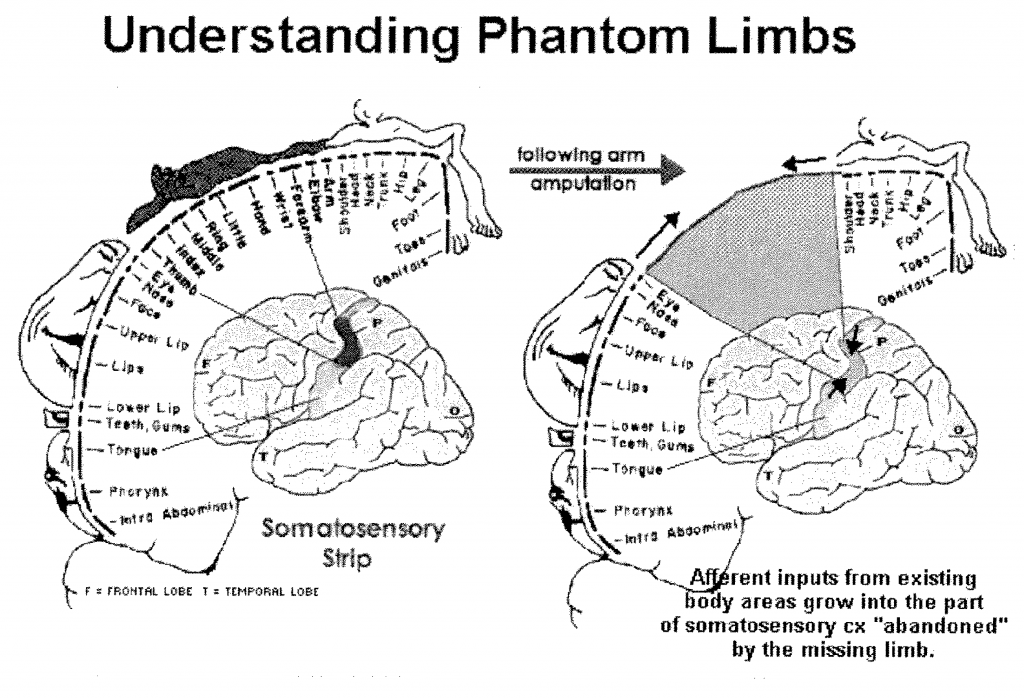Amputees with a missing arm or hand can now use gesture controls just like any other user.

A company called Rovi Guides has patented an invention that detects the motions of a non-existing limb and uses it to control operation of a computer. The invention exploits the fact that muscle control of limbs originates in the brain.

When a limb is completely missing, there is no way to detect muscle activity. But by sensing activity in certain regions of brain, the movements of the phantom limb may be detected. These movements may then be recognized and used to perform certain operations like controlling a media player.

Detection of phantom limb movement is also possible in cases where an amputee is using an EMG based prosthetic device. When the amputee performs a movement with the phantom limb even with the missing prosthetic device, a unique EMG signature is generated. By sensing and recognizing this EMG signature operations of a computer can be controlled.

Publication number: US 9294802
Patent Title: Gesture control based on prosthetic nerve signal detection
Publication date: 22 Mar 2016
Filing date: 30 Jan 2015
Inventors: Michael R. Nichols; Danielle Larson;
Applicant: Rovi Guides, Inc.

